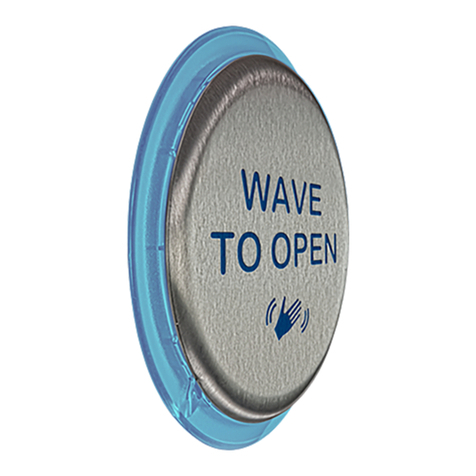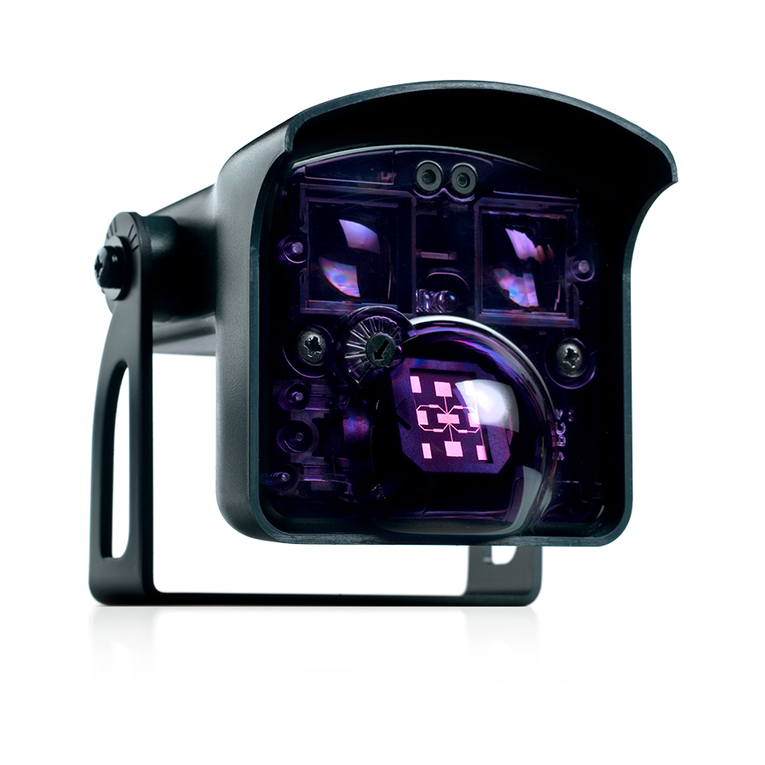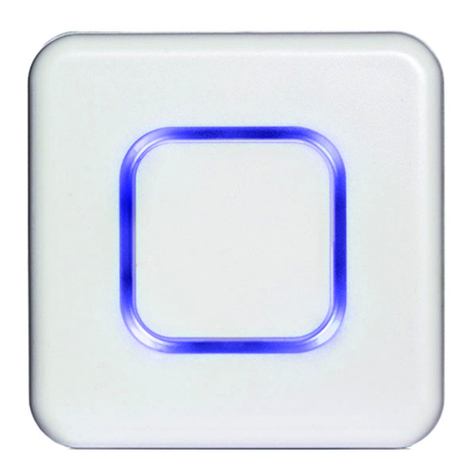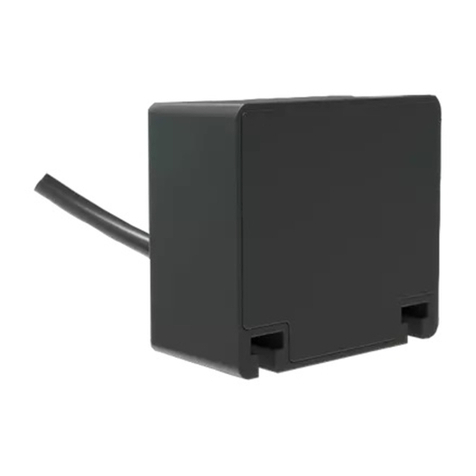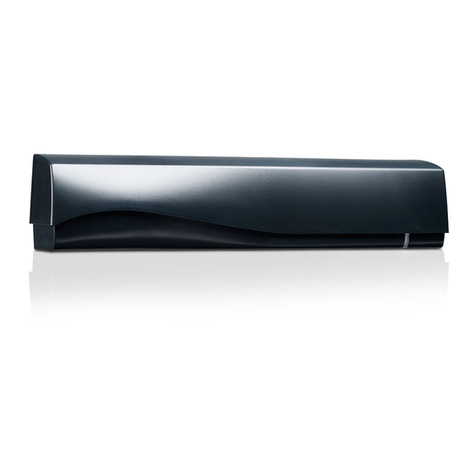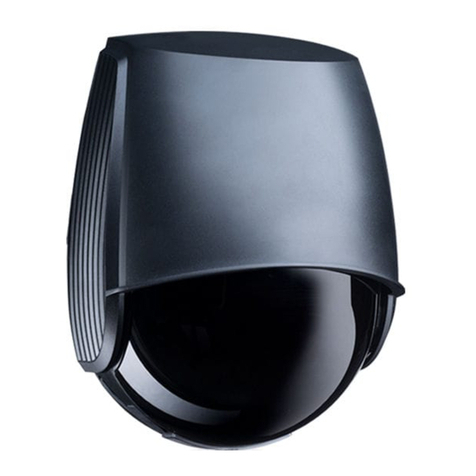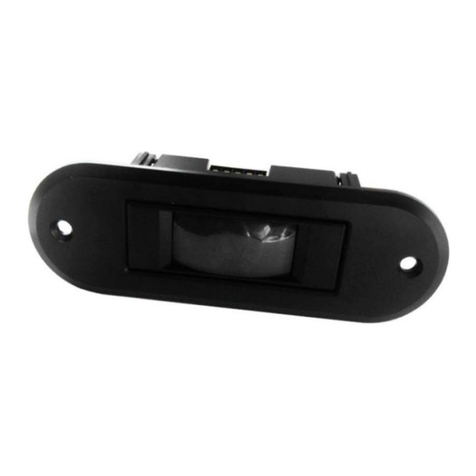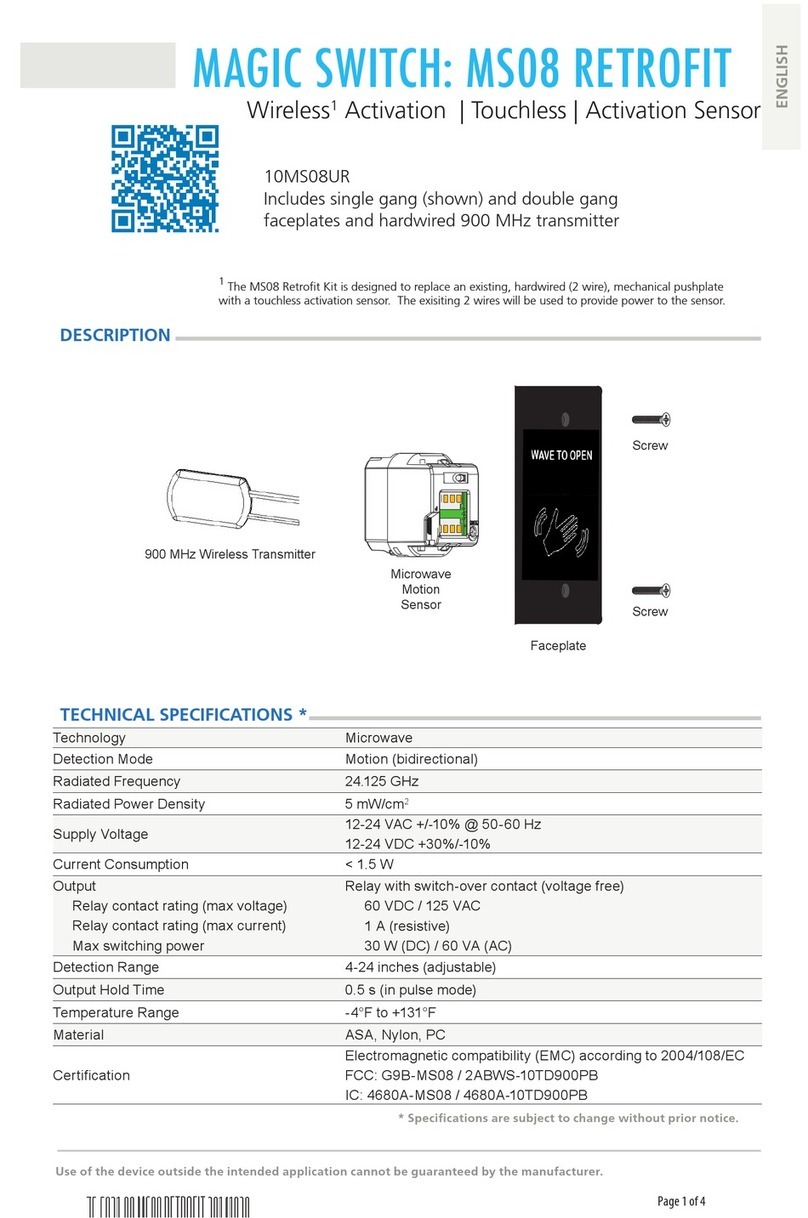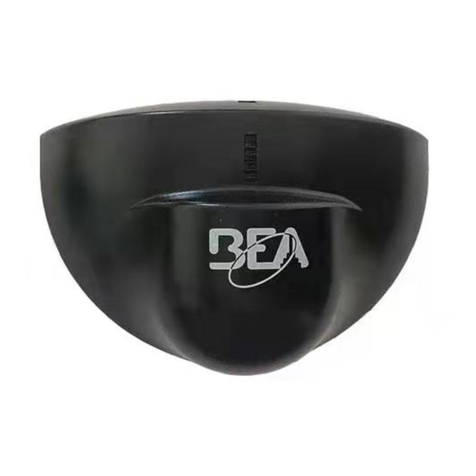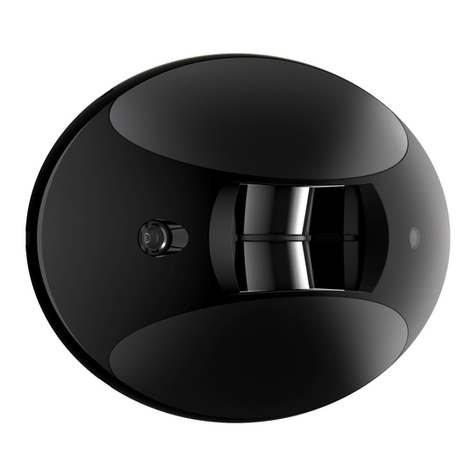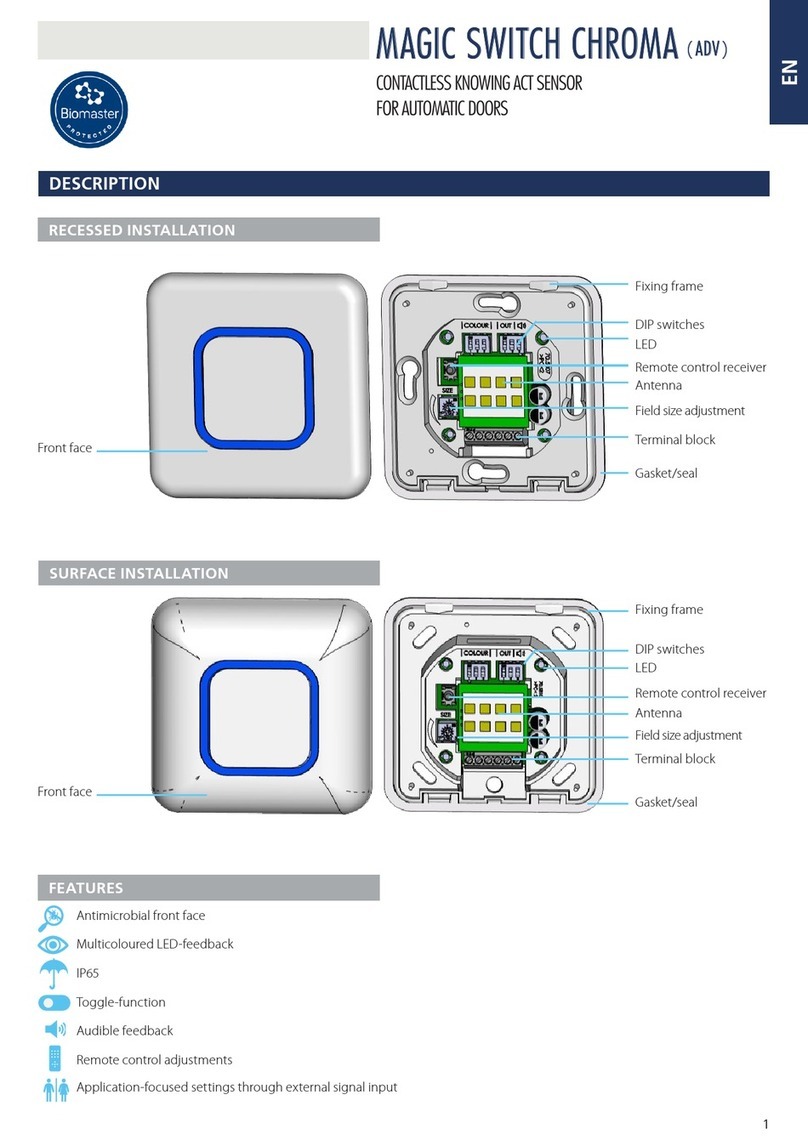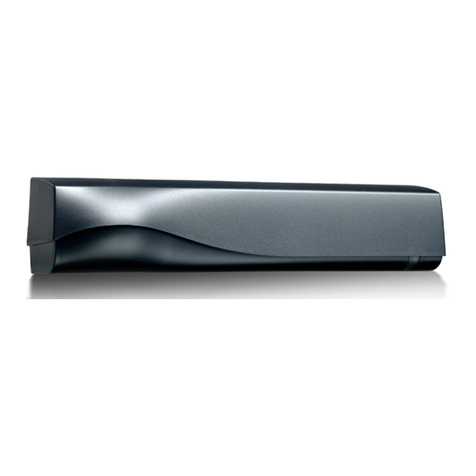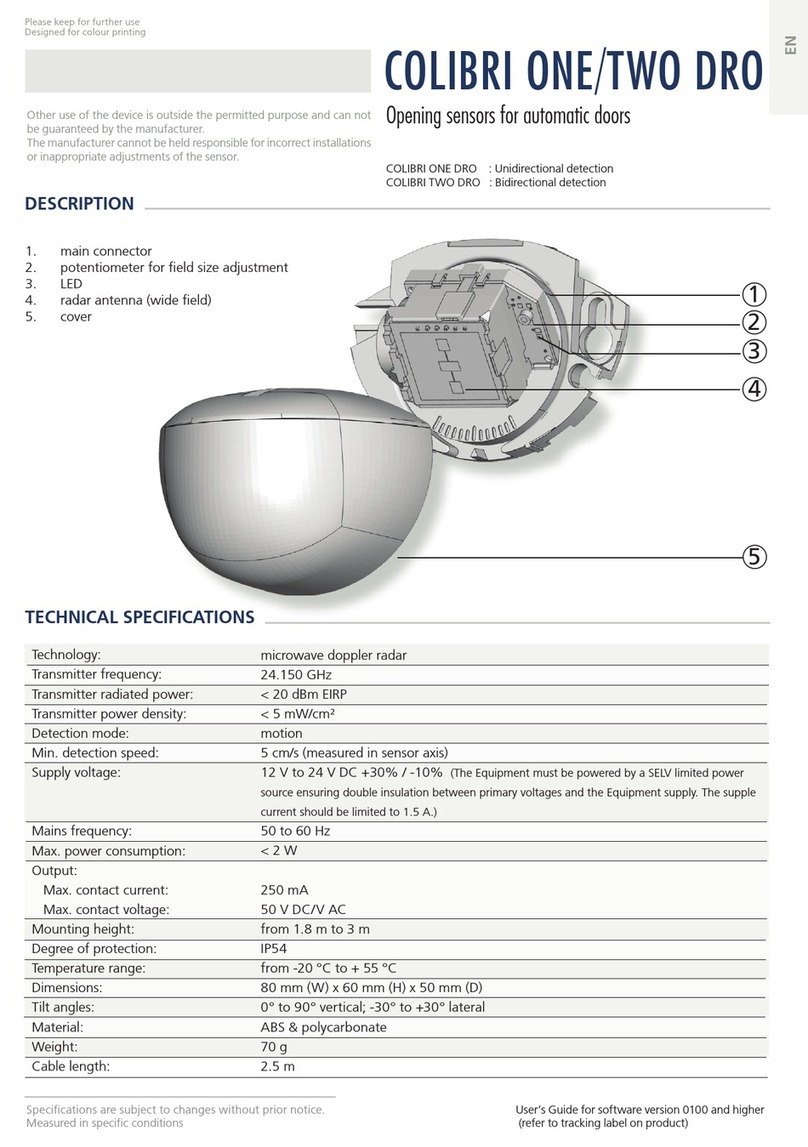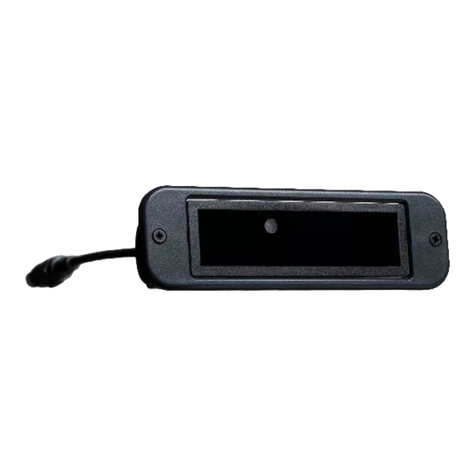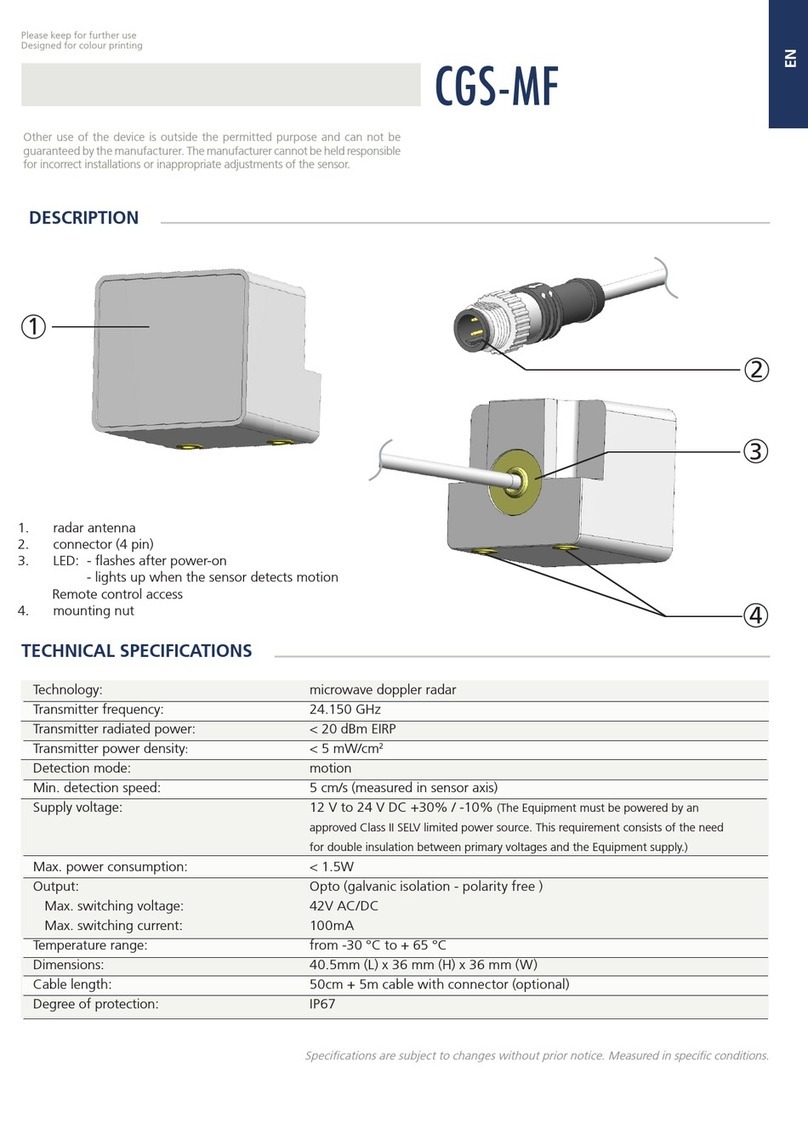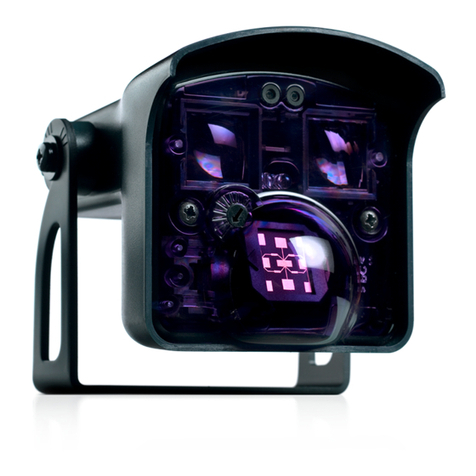- 10.13
BEA hereby declares that the EAGLE ONE HM is in conformity with the basic requirements and the other
relevant provisions of the directives R&TTE 1999/5/EC, LVD 2006/95/EC, RoHS 2 2011/65/EU.
Angleur, October 2013 Pierre Gardier, R&D Manager (Authorized representative)
The complete declaration of conformity is available on our website: www.bea-pedestrian.be
TROUBLESHOOTING
The door remains
closed.
The LED is OFF.
The sensor power is off. Check the wiring and the power supply.
The door does not
react as expected.
The door opens
and closes
constantly.
The LED
flashes quickly
after unlocking.
The sensor does
not respond to the
remote control.
Improper output
configuration on the sensor.
The sensor is disturbed
by the door motion or
vibrations caused by the
door motion.
The sensor needs an access
code to unlock.
Batteries in the remote
control are weak or
installed improperly.
The door opens for
no apparent reason.
It rains and the sensor
detects the motion of the
rain drops.
Remote control badly
pointed.
Change the output configuration setting on
each sensor connected to the door operator.
Make sure the sensor is fixed properly.
Make sure the detection mode is unidirectional.
Increase the antenna angle.
Increase the immunity filter.
Reduce the field size.
Change the antenna angle.
Decrease the field size.
Increase the immunity filter.
Enter the right access code.
If you forgot the code, cut and restore the power
supply to access the sensor without access code.
Change or delete the access code.
Check and change the batteries if necessary.
Point the remote control towards the sensor.
Make sure the detection mode is unidirectional.
Increase the immunity filter.
Install the ORA (rain accessory).
In highly reflective
environments, the sensor
detects objects outside of its
detection field.
ACCESS CODE
The access code (1 to 4 digits) is recommended to set sensors installed close to each other.
SAVING AN ACCESS CODE:
DELETING AN ACCESS CODE:
In airlock vestibules,
the sensor detects the
movement of
the opposite door.
Change the antenna angle.
Change the antenna.
Increase the immunity filter.
The door control setting (F2)
is set to value 3 (closed). Change the door control setting (F2) to value 1
(automatic).
Once you have saved an access code, you always need to enter this code to unlock the sensor.
If you forget the access code, cut and restore the power supply. During 1 minute, you can access the sensor without
introducing any access code.
Only for EC countries: According to the European Guideline 2002/96/EC for Waste Electrical and Electronic Equipment (WEEE)
PLEASE KEEP FOR FURTHER USE - DESIGNED FOR COLOUR PRINTING
1
2
4
3
TECHNICAL SPECIFICATIONS
DESCRIPTION
ENGLISH
Unidirectional opening sensor
for high mounting on automatic doors*
1. main connector
2. antenna
3. push buttons
4. cover
Technology:
Transmitter frequency:
Transmitter radiated power:
Transmitter power density:
Detection mode:
Min. detection speed:
Supply voltage:
Mains frequency:
Max power consumption:
Output:
Max. contact voltage:
Max. contact current:
Max. switching power:
Mounting height:
Degree of protection:
Temperature range:
Dimensions:
Tilt angles:
Material:
Weight:
Cable lenght:
Norm conformity:
microwave and microprocessor
24.150 GHz
< 20 dBm EIRP
< 5 mW/cm²
motion
5 cm/s
12V to 24V AC ±10%; 12V to 24V DC +30% / -10%
50 to 60 Hz
< 2 W
relay (free of potential change-over contact)
42V AC/DC
1A (resistive)
30W (DC) / 60VA (AC)
from 4 m to 5 m
IP54
from -20 °C to + 55 °C
120 mm (L) x 80 mm (H) x 50 mm (W)
0° to 90° vertical; -30° to +30° lateral
ABS
215 g
2.5 m
R&TTE 1999/5/EC, LVD 2006/95/EC, RoHS 2 2011/65/EU
Specifications are subject to changes without prior notice.
Measured in specific conditions.
User’s Guide for product version 0600 and higher
See product label for serial number
